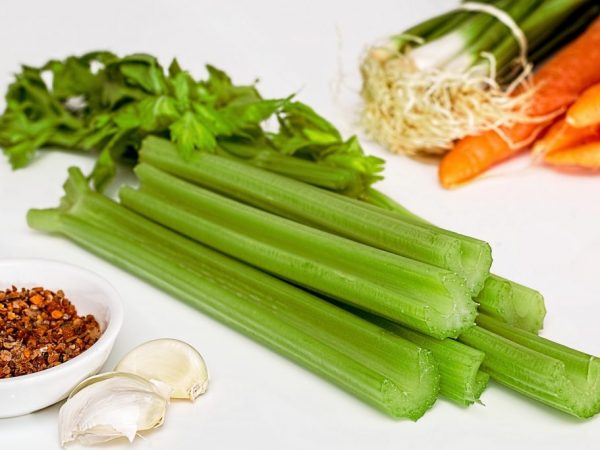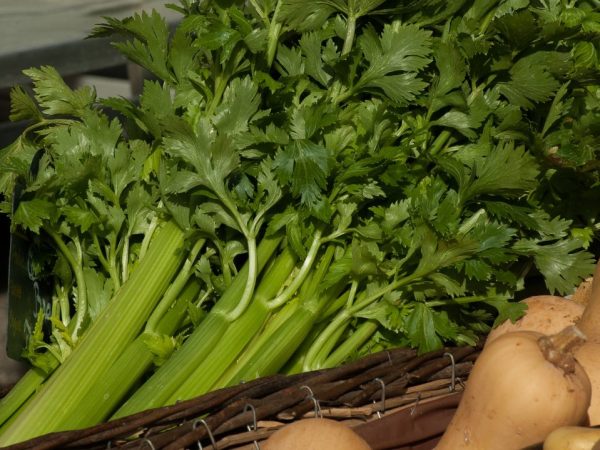Planting rules for celery seedlings in 2019
Celery is endowed with a lot of nutrients and is unpretentious in care, so you should pay attention to this culture. The timing of planting seedlings depends on several factors, consider which dates for 2019 are considered the most successful (according to the lunar calendar, for different climatic zones and for different varieties).

Planting rules for celery seedlings in 2019
Lunar calendar
Before you start sowing seedlings in 2019, it is worth referring to the lunar calendar and sowing seeds at the right time for this.
Favorable days for planting celery according to the lunar calendar:
- January - 27-29;
- February - 1, 6-8, 11-13, 23-26, 28;
- March - 10-12, 15-17, 23-25, 27-30;
- April - 7-11, 16-17;
- May - 1-5, 9, 12-14, 17-18.
Unfavorable days:
- January - 6, 21;
- February - 5, 19;
- March - 4, 21;
- April - 5, 19;
- May - 4, 19.
Regional features
Planting crops for seedlings begins in January, but only in the southern regions. Better to wait until February and plant early this month.
In the middle lane, they begin to work with seedlings not earlier than the second half of February, and in the northern regions, such as the Urals and Siberia, it is worth postponing this until March.
Varietal features
Pay attention not only to the climatic conditions in your region, but also to the requirements of a particular variety.
The root ripens for a rather long time, about 80 days, therefore it is during this time that seedlings must be prepared before transplanting into open ground. Petiole celery is sown in late March - early April. The leaf is suitable for planting in the second half of March, and in some regions of the middle lane - in early April.
Landing rules
The technique is not difficult, but its observance guarantees the expected result: it is necessary to prepare the seeds and soil well
Seed preparation
The seeds must be pre-processed. To do this, keep them in a solution of potassium permanganate (2%) for no more than 15 minutes. This will protect them from disease. Then transfer the seeds to a paper towel or cheesecloth, moisten liberally and transfer to a warm place.
Germination takes place on about the 5th day, which means that it is time to transplant the seedlings into the ground.

Be sure to follow the rules for watering celery
The soil for planting should be composed of several layers of nutrients. These include humus, sod land, peat and sand. Such soil will provide the plant with a large amount of vitamins and other useful elements, the germinated seeds will not lack any substances.
It is better to water the crop with a spray bottle so that the water flows evenly, covering the entire area. The container with the planted plant must be kept indoors at a temperature not exceeding 20 ° C. A few weeks later, when the first shoots appear, it is better to lower this indicator by 5 ° C.
There is another important rule, the observance of which will protect celery from death. Seedlings are recommended to be additionally illuminated so that the total duration of lighting per day is 13 hours.Special lamps can easily help with this.
Picking
The plant needs a pick when the second whole leaf sprouts. Then the core zone of the root is pinched to it, and then seated separately in other larger containers. A week later, the first feeding is already carried out - any complex fertilizers that are sold in a gardening store will do.
With the arrival of heat in May, the plant begins to harden, a suitable temperature for the beginning is 10 ° C, and the time is 2-3 hours. The number of hours for this should be gradually increased. The duration of the entire procedure is 10 days, and after that it is already possible to transplant the seedlings into open ground.
Care
After planting, celery needs to be fertilized, watered and protected from pests. There is a lot of work, but the result will be worthy of all the work.
Take care of the lighting. Because sowing is carried out mainly in winter, daylight hours are not enough for the development of the plant. It is very easy to fill this shortage with the help of special phytolamps.
In the first week, lighting should be around the clock, after which the lighting is needed in the morning and evening, on cloudy days. In the absence of the required amount of light, the shoots will stretch out and the stem will be thin.
The temperature before the emergence of the first shoots should be at least 20 ° C, after germination it can be reduced.
Water the sprouts not immediately, but after 3-4 days. The water should be at room temperature. Water weekly with a spray bottle. After it, thoroughly loosen the earth.
Top dressing is carried out 2 weeks after the pick. The type of fertilizer depends on the condition of the leaves of the plant. If they are pale or even yellow, then urea should act as it (0.5 tsp per 1 liter of water).
With normal growth and color of the leaves, ordinary complex fertilizers are suitable (the proportions are the same). Liquid concentrates of humic substances are also used (their dosage is usually indicated on the label).
Top dressing can be repeated after 10 days. Only the dosage changes: you need to dilute 2 tbsp. l. fertilizer in 5 liters of water. The second root celery dressing can be changed to potassium or sodium nitrate.
Transplant timing of seedlings
After the seedlings have already started up several leaves, they need to be transplanted into open ground. The most suitable time for this is the beginning of May. The main thing is that there are no frosts and warming is guaranteed.
If at night the temperature drops to minus marks, build a shelter for the plant for the first time.
Harvesting
Harvesting usually begins in mid-October. If frosts already begin in your region at this time, the process should be carried out a few weeks earlier.
There are recommendations for harvesting celery in some regions:
- in the Moscow region, it is better to harvest in late October - early November. It is better to grow late varieties there, because the climate is characterized by high humidity;
- in the Volga region, it is better to start harvesting in September due to the fact that there are usually rather snowy and cold winters and hot summers;
- early varieties are the best option for Siberia and the Urals. Frosts start very early there, and winters are harsh. Harvesting begins in July.
When the tops have turned yellow, the root crop is pulled out. Then you need to knock on it: it is determined by the ringing sound whether it is ripe. You can just dig up the root vegetable. Both methods are acceptable, but the second is more suitable if the celery is planted to preserve it in winter.
Another important nuance - a week before harvesting, the tops are cut off, then all the nutrients are concentrated in the root crop itself.
Leaf celery and stalked celery are a little more difficult to harvest. Leaves and petioles must be carefully cut (do not pluck). They do this so as not to harm the root crop, the further growth of the culture depends on it.
Storage rules
Root celery can be stored for up to six months. It should be kept in a plastic bag or in wet sand at freezing temperatures.Fresh leaves and petioles can be stored for no longer than a month, but they can be frozen and thus extend their useful life.
To do this, wash the plant well, dry it and put it in a plastic bag. After that, they will be stored in the freezer for much longer.
Celery is a plant full of nutrients, a real storehouse of vitamins. Sowing a culture and caring for it will not take much time, and the lunar calendar of favorable days for planting in 2019 will only simplify this task.

